World War I casualties
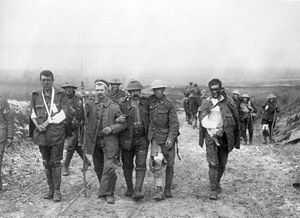
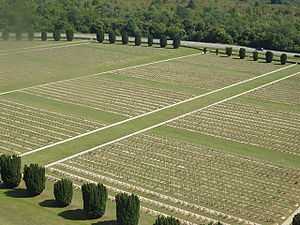
The total number of military and civilian casualties in World War I was over 37 million: over 16 million deaths and 20 million wounded, ranking it among the deadliest conflicts in human history.
The total number of deaths includes about 10 million military personnel and about 7 million civilians. The Entente Powers (also known as the Allies) lost about 6 million military personnel while the Central Powers lost about 4 million. At least 2 million died from diseases and 6 million went missing, presumed dead. This article lists the casualties of the belligerent powers based on official published sources. About two-thirds of military deaths in World War I were in battle, unlike the conflicts that took place in the 19th century when the majority of deaths were due to disease. Nevertheless, disease, including the Spanish flu and deaths while held as prisoners of war, still caused about one third of total military deaths for all belligerents.
Classification of casualty statistics
Estimates of casualty numbers for World War I vary to a great extent; estimates of total deaths range from 9 million to over 15 million.[1] Official government reports listing casualty statistics were published by the United States [2] and Great Britain [3] These secondary sources published during the 1920's are the source of casualty statistics listed in reference works listing casualties in World War One [4][5][6] [7] [8] This article summarizes the casualty statistics published in the official government reports of the United States and Great Britain as well as France, Italy, Belgium, Germany, Austria and Russia. More recently the research of the Commonwealth War Graves Commission (CWGC) has revised the casualty statistics British Empire, they include in their casualty figures personnel from Africa, the Mid East and Asia that provided combat service support. [9] The casualties of these support personnel recruited outside of Europe were not included in the statistics published by Great Britain in 1922[10][11] Military casualty statistics reported in official sources list deaths due to all causes, including an estimated 7 to 8 million combat related deaths( killed or died of wounds) as and and additional 2 to 3 million military deaths caused by disease and deaths while prisoners of war. First World War civilian deaths are "hazardous to estimate" according to Michael Clodfelter who maintains that "the generally accepted figure of noncombatant deaths is 6.5 million."[12] The figures listed below include about 6 million excess civilian deaths due to war related privations, that are often omitted from other compilations of World War I casualties. The war brought about malnutrition and disease caused by a disruption of trade resulting in shortages of food; the mobilization for the war took away millions of men from the agricultural labor force cutting food production. The civilian deaths in the Ottoman Empire include the Armenian Genocide, Assyrian Genocide and Greek Genocide. Civilian deaths due to the Spanish flu have been excluded from these figures, whenever possible. Furthermore, the figures do not include deaths during the Turkish War of Independence and the Russian Civil War.
Casualties by 1914 borders
| Nation | Population (millions) |
Combat Deaths and Missing in Action (included in total Military Deaths) |
Total Military deaths (from all causes) |
Civilian deaths (military action and crimes against humanity) |
Civilian deaths (malnutrition and disease excluding Influenza pandemic) |
Total deaths | Deaths as % of population |
Military wounded | |
|---|---|---|---|---|---|---|---|---|---|
| Allies of World War I | |||||||||
| 5.0 | 53,560[13] | 59,330[14] to 62,081[9] |
59,330 to 62,081 |
1.32% to 1.24% |
152,171 [14] | ||||
| 7.2 | 56,638[15] | 56,639[14] to 64,997[9] |
2,000[16][17] | 58,639 to 64,997 |
0.81% to 0.9% |
149,732[14] | |||
| 315.1 | 62,060[13] | 64,449[14] to 73,895[9] |
64,449 to 73,895 |
0.02% to 0.02% |
69,214 [14] | ||||
| 1.1 | 16,710[13] | 16,711[14] to 18,053 [18] |
16,711 to 18,053 |
1.52% to 1.64% |
41,317[14] | ||||
| 0.2 | 1,204[14] to 1,570 (included with U.K)[19] |
1,204 1,570 |
0.6% to 0.79% |
2,314[14] | |||||
| 6.0 | 7,120[13] | 7,121[14] to 9,592[9] |
7,121 to 9,592 |
0.12% to 0.16% |
12,029[14] | ||||
(and Colonies) s |
45.4 | 702,410(Army)[13] 32,287 (Navy)[20] |
702,917 (Army)[14][21] |
16,829[24][25] | 107,000[27] | 826,746 to 1,012,075 |
1.79% to 2.2% |
1,663,435 (Army)[14] 5,135 (Navy)[28] | |
| Sub-total for British Empire | 379.5 | 930,785 | 908,371 Army[14] 32,287 Navy[14] to 1,116,371[9] |
18,829 | 109,000 | 1,034,200 to 1,244,589 |
0.27% to 0.32% |
2,090,212 (Army)[14] 5,135 (Navy)[29] | |
| East Africaa | See footnote | ||||||||
| 7.4 | 38,170[13] | 13,716[30] to 58,637[31][32] |
23,700[31] | 62,000[33] | 99,416 to 144,337 |
1.34% to 1.95% |
44,686[34] | ||
| 39.6 | 1,150,000[35][36] | 1,357,000[30] to 1,397,800[37] |
40,000.[12][38][39] | 300,000[33] | 1,697,000 to 1,737,800 |
4.29% to 4.39% |
4,266,000[34] | ||
| 4.8 | 5,000[13] | 5,000[40] to 26,000[41] |
150,000[42] | 155,000 to 176,000 |
3.23% to 3.67% |
21,000[34] | |||
| 35.6 | 462,400[13] | 460,000[30] to 651,000[43] |
3,400[44] | 589,000[45] | 1,052,400 to 1,243,400 |
2.96% to 3.49% |
947,000[34] | ||
| 53.6 | 300[34] to 4,661[46] |
300 to 4,661 |
0% to 0.01% |
907[34] | |||||
| 0.5 | 3,000[34] to 13,325 [46] |
3,000 to 13,325 |
0.6% to 2.67% |
10,000[34] | |||||
| 6.0 | 7,220[13] | 7,222[30][34] | 82,000[47] | 89,222 | 1.49% | 13,751[30] | |||
| 7.5 | 219,800[13] | 250,000[46] to 335,706[40] |
130,000[48] | 200,000[48] | 580,000 to 665,706 |
7.73% to 8.88% |
120,000 [34] | ||
| 175.1 | 1,800,000[13] | 1,700,000[34] to 2,254,369[49] |
410,000[50] | 730,000[50] | 2,840,000 to 3,394,369 |
1.62% to 1.94% | 3,749,000[49] to 4,950,000[34] | ||
| 4.5 | 127,500[13] | 300,000[51] to 450,000 [52] |
450,000[51] to 800,000[52] |
750,000 to 1,250,000 |
16.67% to 27.78% |
133,148[34] | |||
| 92.0 | 53,402[53] | 116,708[54][55] | 757[56] | 117,465 | 0.13% | 204,002[54] | |||
| Total (Entente Powers) | 806.1 | 4,794,277 | 5,153,604 to 6,431,799 |
612,057 | 2,670,000 3,020,000 |
8,435,661 to 10,063,856 |
1.05% to 1.25% |
11,599,706 to 12,805,841 | |
| Central Powers | |||||||||
| 51.4 | 1,016,200[13] | 1,200,000.[34][57] to 1,494,200 [58][59] |
120,000.[60] | 467,000.[61] | 1,787,000 to 2,081,200 |
3.48% to 4.05% |
3,620,000 [62] | ||
| 5.5 | 77,450[13] | 87,500[34][63] | 100,000[64] | 187,500 | 3.41% | 152,390 [34][65] | |||
| 64.9 | 2,037,000[13][66][67] | 1,773,700[34] to 2,037,000[68][69] |
720[70] | 424,000.[71] to 763,000 [72][73] |
2,198,420 to 2,800,720 |
3.39% to 4.32% |
4,216,058 [34] to 4,247,143.[74] | ||
| 21.3 | 305,085[75] | 325,000[34] to 771,844[76] |
1,500,000.[77] | 1,000,000[78] | 2,825,000 to 3,271,844 |
13.26% to 15.36% |
400,000[34] to 763,753[76] | ||
| Total (Central Powers) | 143.1 | 3,435,735 | 3,386,200 to 4,390,544 |
1,620,720 | 1,991,000 to 2,330,000 |
6,997,920 to 8,341,264 |
4.89% to 5.82% |
8,388,448 to 8,783,286 | |
| Neutral nations | |||||||||
| 2.7 | 700[79] | 700 | 0.03% | — | |||||
| 0.3 | See footnote | ||||||||
| 2.4 | 1,180.[46] | 1,180 | 0.08% | — | |||||
| 5.6 | 800.[46] | 800 | 0.02% | — | |||||
| Grand total | 960.2 | 8,230,012 | 8,539,804 to 10,822,343 |
2,235,457 | 4,661,000 to 5,350,000 |
15,436,261 to18,407,800 |
1.61% to 1.92% |
22,078,366 to 23,684,474 | |
Casualties by 1924 Post War Borders
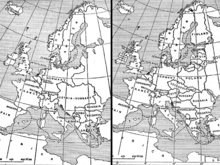
The war involved multi-ethnic empires such as Great Britain, France, Germany, Russia, Austro-Hungary and Turkey. Many diverse ethnic groups in these multi-ethnic empires were conscripted for military service. The casualties listed by modern borders are also included in the above table of figures for the countries that existed in 1914. The figures most casualty figures by 1924 post war borders are rough estimates by Russian journalist in a 2004 handbook of human losses in the 20th century, the sources of his figures were published in the Soviet era and Russia.[80]
The following estimates of Austrian deaths, within contemporary borders, were made by a Russian journalist in a 2004 handbook of human losses in the 20th century. Total dead 175,000: including military losses 120,000 with the Austo-Hungarian forces and POW deaths in captivity of 30,000. Civilian dead due to famine and disease were 25,000.[81]
The Belgian Congo was part of the Kingdom of Belgium during the war. A Russian journalist Vadim Erlikman in a 2004 handbook of human losses in the 20th century based on sources published in the Soviet Union and Russia estimated a total of 155,000 deaths in the Belgian Congo during the war.[82]
Czechoslovakia was part of Austro-Hungary during the war. The estimates of Czechoslovak deaths within 1991 borders were made by a Russian journalist in a 2004 handbook of human losses in the 20th century. Total dead 185,000: including military losses 110,000 with the Austro-Hungarian forces and POW deaths in captivity of 45,000. Civilian dead due to famine and disease were 30,000.[83] The Czechoslovak Legions fought with the armies of the Allies during the war.
Estonia was part of the Russian Empire during the war and about 100,000 Estonians served in the Russian Army. Of them about 10,000 were killed.[84]
From 1809 Finland was an autonomous Grand Duchy in the Russian Empire until the end of 1917. In 1924 the Finnish government in a reply to a questionnaire from the International Labour Office, an agency of the League of Nations, reported 26,517 were dead and missing in World War I.[46]
The following estimates of deaths, within contemporary borders, during World War I were made by a Russian journalist Vadim Erlikman in a 2004 handbook of human losses in the 20th century. Erlikman's estimates are based on sources published in the Soviet Union and Russia.[82]
 Algeria (1914 known as French Algeria): 26,000
Algeria (1914 known as French Algeria): 26,000 Vietnam (1914 known as French Indochina): 12,000
Vietnam (1914 known as French Indochina): 12,000 Mali (1914 part of French West Africa): 60,000
Mali (1914 part of French West Africa): 60,000 Morocco (1914 known as the French protectorate of Morocco): 8,000
Morocco (1914 known as the French protectorate of Morocco): 8,000 Senegal (1914 part of French West Africa): 36,000
Senegal (1914 part of French West Africa): 36,000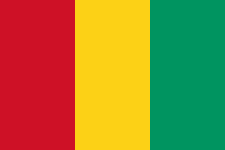 Guinea (1914 part of French West Africa): 14,500
Guinea (1914 part of French West Africa): 14,500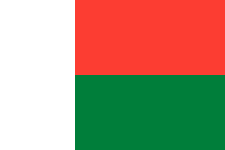 Madagascar: 2,500 military
Madagascar: 2,500 military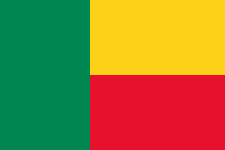 Benin (1914 part of French West Africa): 27,000
Benin (1914 part of French West Africa): 27,000 Burkina Faso (1914 part of French West Africa): 17,000
Burkina Faso (1914 part of French West Africa): 17,000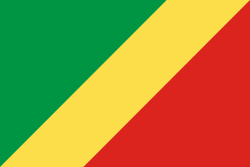 Republic of the Congo (1914 part of French Equatorial Africa):32,000
Republic of the Congo (1914 part of French Equatorial Africa):32,000 Ivory Coast (1914 part of French West Africa): 12,000
Ivory Coast (1914 part of French West Africa): 12,000 Tunisia (1914 known as French Tunisia): 2,000
Tunisia (1914 known as French Tunisia): 2,000 Chad (1914 part of French Equatorial Africa): 1,500
Chad (1914 part of French Equatorial Africa): 1,500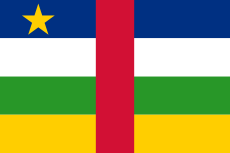 Central African Republic (1914 known as French Oubangui-Chari): 1,000
Central African Republic (1914 known as French Oubangui-Chari): 1,000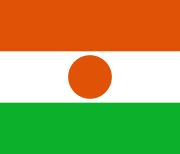 Niger (1914 part of French West Africa): 1,000
Niger (1914 part of French West Africa): 1,000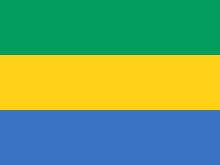 Gabon (1914 part of French Equatorial Africa): 10,500
Gabon (1914 part of French Equatorial Africa): 10,500
The following estimates of deaths, within contemporary borders, during World War I were made by a Russian journalist Vadim Erlikman in a 2004 handbook of human losses in the 20th century. Erlikman's estimates are based on sources published in the Soviet Union and Russia.[85]
 Tanzania (1914 part of German East Africa): 50,000
Tanzania (1914 part of German East Africa): 50,000 Namibia (1914 known as German South-West Africa): 1,000
Namibia (1914 known as German South-West Africa): 1,000 Cameroon (1914 known as Kamerun): 5,000 military and 50,000
Cameroon (1914 known as Kamerun): 5,000 military and 50,000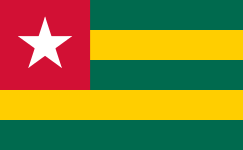 Togo (1914 known as German Togoland): 2,000
Togo (1914 known as German Togoland): 2,000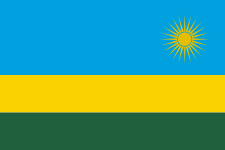 Rwanda (1914 part of German East Africa) 15,000
Rwanda (1914 part of German East Africa) 15,000
The following estimates of Hungarian deaths, within contemporary borders, during World War I were made by a Russian journalist in a 2004 handbook of human losses in the 20th century. Total dead 385,000: including military losses 270,000 with the Austro-Hungarian forces and POW deaths in captivity of 70,000. Civilian dead due to famine and disease were 45,000.[86]
Ireland was a part of the UK during World War I. Five sixths of the island left to form the Irish Free State, now the Republic of Ireland, in 1922. A total of 206,000 Irishmen served in the British forces during the war.[87] The number of Irish deaths in the British Army recorded by the registrar general was 27,405.[88] A significant number of these casualties were from what, in 1920, became Northern Ireland. While 49,400 soldiers died serving in Irish Divisions (the 10th, 16th and 36th),[89] not all of the men serving in these divisions were natives of Ireland [90] and many Irish who died in non-Irish regiments are not listed. For example, 29% of the casualties in the 16th Division were not natives of Ireland.[88] Neither does it include Irish emigrants in Britain who enlisted there and are not categorised as Irish. Australia lists 4,731 of its first World War soldiers as having been born in Ireland, and more than 19,000 Irish-born soldiers served in the Canadian Corps. The rolls do list 30,986 soldiers who were born in Ireland. Prof John Horne of Trinity College Dublin says a figure of between 30,000 and 35,000 Irish war dead is a “conservative" estimate, and one likely to rise.
The losses of Portuguese Mozambique were estimated by a Russian journalist Vadim Erlikman in a 2004 handbook of human losses in the 20th century. Erlikman's estimates are based on sources published in the Soviet Union and Russia.[82] 52,000
Poland was an annexed territory of Germany, Austria-Hungary and Russia, from 1795 to 1918. By late 1915 Germany had complete control over modern-day Poland. A 2005 Polish study estimated 3,376,800 Poles were conscripted into the armed forces of the occupying powers during World War I, an additional 300,000 were conscripted for forced labor by the Germans. The Russians and Austrians forcibly resettled 1.6 to 1.8 million persons from the war zone in Poland.[91] According to Michael Clodfelter Polish war dead were 1,080,000; 200,000 Polish civilians were killed in the fighting on the Eastern Front and 870,000 men serving in the German, Austrian and Russian armies.[12] Another estimate made by a Russian journalist in a 2004 handbook of human losses in the 20th century put total Polish war dead at 640,000, including military losses of 270,000 Poles conscripted and civilian losses of 120,000 due to military operations and 250,000 caused by famine and disease.[92] The ethnic Polish Blue Army served with the French Army. The ethnic Polish Legions fought as part of the Austro-Hungarian Army on the Eastern Front.
The territory of Transylvania was part of Austria-Hungary during World War I. The following estimates of Romanian deaths, within contemporary borders, during World War I were made by a Russian journalist in a 2004 handbook of human losses in the 20th century. Total dead 748,000: including military losses 220,000 with the Romanian forces and 150,000 with the Austro-Hungarian forces and POW deaths in captivity of 48,000. Civilian dead were as follows due to famine and disease 200,000, killed in military operations 120,000 and 10,000 dead in Austrian prisons. [48]
Britain recruited Indian, Chinese, native South African, Egyptian and other overseas labour to provide logistical support in the combat theatres.[93] Included with British casualties in East Africa are the deaths of 44,911 recruited labourers.[94] The CWGC reports that nearly 2,000 workers from the Chinese Labour Corps are buried with British war dead in France.[95]
The following estimates of British Empire colonial military deaths, within contemporary borders, during World War I were made by a Russian journalist Vadim Erlikman in a 2004 handbook of human losses in the 20th century. Erlikman's estimates are based on sources published in the Soviet Union and Russia.[96]
 Ghana (1914 known as the Gold Coast): 16,200
Ghana (1914 known as the Gold Coast): 16,200 Kenya (1914 known as British East Africa): 32,000
Kenya (1914 known as British East Africa): 32,000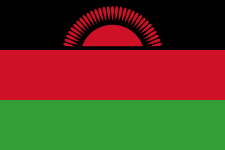 Malawi (1914 known as Nyasaland): 3,000
Malawi (1914 known as Nyasaland): 3,000  Nigeria (1914 part of British West Africa): 85,000
Nigeria (1914 part of British West Africa): 85,000 Sierra Leone (1914 part of British West Africa): 1,000
Sierra Leone (1914 part of British West Africa): 1,000 Uganda (1914 known as the Uganda Protectorate): 1,500
Uganda (1914 known as the Uganda Protectorate): 1,500 Zambia (1914 known as Northern Rhodesia): 2,000
Zambia (1914 known as Northern Rhodesia): 2,000
 Zimbabwe (1914 known as Southern Rhodesia): 5,716 persons of European origin served in the war, 700 were killed, died of wounds or other causes. In Rhodesian units,127 were killed, 24 died of wounds, 101 died of disease or other causes and 294 were wounded. 31 Africans were killed in action, 142 died of other causes and 116 were wounded.[97]
Zimbabwe (1914 known as Southern Rhodesia): 5,716 persons of European origin served in the war, 700 were killed, died of wounds or other causes. In Rhodesian units,127 were killed, 24 died of wounds, 101 died of disease or other causes and 294 were wounded. 31 Africans were killed in action, 142 died of other causes and 116 were wounded.[97]
The following estimates are for Yugoslavia within the 1991 borders.
Slovenia, Croatia, Bosnia and Vojvodina (Now part of Serbia) were part of Austria-Hungary during World War I. Serbia, which included Macedonia, and Montenegro were independent nations. The Yugoslav historian Vladimir Dedijer put the total losses of the Yugoslav lands at 1.9 million of which 43% were from Serbia.[98] The following estimates of Yugoslav deaths, within 1991 borders, during World War I were made by a Russian journalist in a 2004 handbook of human losses in the 20th century. Total dead 996,000: including military losses 260,000 with the Serbian forces, 80,000 with the Austro-Hungarian forces 13,000 with Montenegro forces and POW deaths in captivity of 93,000. Civilian dead were as follows due to famine and disease 400,000, killed in military operations 120,000 and 30,000 dead in Austrian prisons or executed.[99]
During WW1, the Nepalese army was expanded and six new regiments, totaling more than 20,000 troops—all volunteers—were sent to India, most of them to the North-West Frontier Province, to release British and Indian troops for service overseas. Simultaneously, the Nepalese government agreed to maintain recruitment at a level that both would sustain the existing British Gurkha units and allow the establishment of additional ones. The battalions were increased to thirty-three with the addition of 55,000 new recruits, and Gurkha units were placed at the disposal of the British high command for service on all fronts. Many volunteers were assigned to noncombat units, such as the Army Bearer Corps and the labour battalions, but they also were in combat in France, Turkey, Palestine, and Mesopotamia. The Rana prime ministers urged Nepalese males to fight in the war. Of the more than 200,000 Nepalese who served in the British Army, there were some 20,000 Gurkha casualties included above with the British Indian Army.[100]
Footnotes
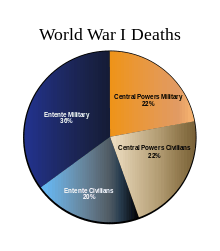

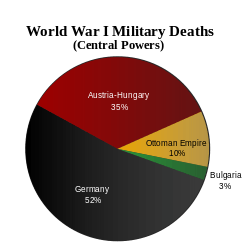
^a East Africa
- The conflict in East Africa caused enormous civilian casualties. The Oxford History of World War One notes that "In east and central Africa the harshness of the war resulted in acute shortages of food with famine in some areas, a weakening of populations, and epidemic diseases which killed hundreds of thousands of people and also cattle."[101] The following estimates of civilian deaths in East Africa during World War I were made by a Russian journalist in a 2004 handbook of human losses in the 20th century: Kenya 30,000; Tanzania 100,000; Mozambique 50,000; Rwanda 15,000; Burundi 20,000; and the Belgian Congo 150,000.[82]
- The military casualties of the UK, France, Germany, Belgium and Portugal include Africans who served with their armed forces, the details are noted above in the list of the various colonies.
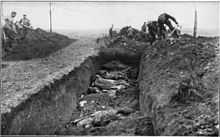
^b Australia
- The Australian War Memorial puts their war dead at 61,513[102]
- The Australian War Memorial maintains a database listing the names of war dead.[103]
- The Commonwealth War Graves Commission figure for Australian war dead is 62,123[9]
- The report of the U.K. War Office listed 59,330 Army war dead, 152,171 wounded and 4,084 taken prisoner.[14]
- In 1924 the Australian government in a reply to a questionnaire from the International Labour Office, an agency of the League of Nations, reported 412,953 men mobilized and 59,337 dead and missing in World War I.[46]
- The Soviet demographer Boris Urlanis estimated that included in total military deaths are 54,000 killed and died of wounds[104]
^c Belgium:
- Belgian government figures for military losses in Europe were 40,367(26,338 killed, died of wounds or accidents and 14,029 died of disease or missing). In Africa: 2,620 soldiers were killed and 15,650 porters died. The combined total for Europe and Africa is 58,637[31]
- United States War Dept. figures for Belgium are: Total mobilized force 267,000; Total casualties 93,061 including Killed and died 13,716; wounded 44,686; Prisoners and missing 34,659[34]
- The report of the U.K. War Office listed 93,061 casualties up until November 11, 1918 including 13,716 killed and died; 24,456 missing; 44,686 wounded and 10,208 POW. "These figures are approximate only, the records being incomplete."[30]
- In 1924 the Belgian government in a reply to a questionnaire from the International Labour Office, an agency of the League of Nations, reported 365,000 men mobilized and 40,936 dead and missing in World War I.[46]
- The Soviet demographer Boris Urlanis estimated that included in total Belgian military deaths are 35,000 killed and died of wounds[104]
- Civilian deaths according to Belgian government statistics were 23,700 (6,000 killed in the 1914 German massacres and 17,700 victims in prisons, deportations and by military tribunals)[31] According to a demographic study there were 92,000 indirect deaths in Belgium (62,000 deaths due to wartime privations and 30,000 in the Spanish Flu pandemic).[33] John Horne estimated that 6,500 Belgian and French civilians were killed in German reprisals.[105]
^d Canada
- The Canadian War Museum lists close to 61,000 killed in the war, including 1,305 from Newfoundland and 172,000 wounded. The Canadian Expeditionary Force lost 59,544 in the war, including 51,748 due to enemy action, the Royal Canadian Navy reported 150 deaths from all causes and 1,388 Canadians died while serving with the British Flying Services.[106]
- The Commonwealth War Graves Commission figure for Canadian war dead is 64,997.[9]
- The report of the U.K. War Office listed 56,639 Canadian war dead, 149,732 wounded and 3,729 taken prisoner.[14]
- In 1924 the Canadian government in a reply to a questionnaire from the International Labour Office, an agency of the League of Nations, reported 628,964 men mobilized and 51,674 dead and missing in World War I.[46]
- The Soviet demographer Boris Urlanis estimated that included in total Canadian military deaths are 53,000 killed and died of wounds[104]
- The Canadian Virtual War Memorial[107] contains a registry of information about the graves and memorials of Canadians and Newfoundlanders who served valiantly and gave their lives for their country.
- The 2,000 [16] Civilian deaths were due to the Halifax Explosion.
^e France
- French casualty figures up until June 1, 1919 were listed in a French government report of August 1, 1919 presented to the French Chamber of Deputies [108] Total Army dead and missing up until November 11, 1918 were 1,357,800 in addition there were 28,600 deaths after November 11, 1918 of those wounded and 11,400 Navy dead which brings total dead and missing to 1,397,800. These figures include 35,200 French Colonial Forces, 35,900 "north Africans" and 4,600 French Foreign Legion personnel.[109]
- According to the French Army official report "La Statistique médicale de l'armée" Total dead were 1,325,000 ( 675,000 killed in action, 225,000 missing and prisoners killed' 250,000 died of wounds and 175,000 died of disease.)[110]
- A breakdown of French casualties published in the Official History of the Australian Army Medical Services, 1914–1918 lists 674,700 killed in action, 250,000 died of wounds, 225,300 missing and presumed dead, and 175,000 dead from disease and injury. Wounded amounted to 2,300,000.[36]
- United States War Dept. figures for French casualties are: Total mobilized force 8,410,000; Total casualties 6,160,800 including Killed and died 1,357,800; wounded 4,266,000; Prisoners and missing 537,000[34]
- The UK War Office put French dead, killed and missing at 1,385,300 dead and missing, including 58,000 colonial soldiers up until Nov. 1,1918. They noted that a government report of Aug. 1, 1919 listed the number of killed and died at 1,357,000. There were no figures available of the wounded.[30]
- In 1924 the French government in a reply to a questionnaire from the International Labour Office, an agency of the League of Nations, reported 7,935,000 men mobilized and 1,400,000 dead and missing in World War I.[46]
- The names of the soldiers who died for France during World War I are listed on-line by the French government.[111]
- The Soviet demographer Boris Urlanis estimated that included in total French military deaths are 1,126,000 killed and died of wounds[104]
- According to the French encyclopedia Quid 30–40,000 foreign volunteers from about 40 nationalities served in the French army. Including 12,000 with the Czechoslovak Legion and the ethnic Polish Blue Army. 5,000 Italians served in a "Legion" commanded by Colonel Garibaldi. There were also 1,000 Spaniards and 1,500 Swiss in French service, 200 American volunteers served with the French from 1914–16, including the Lafayette Escadrille[112] Luxembourg was occupied by Germany during the war. According to the Mobile Reference travel Guide 3,700 Luxembourg citizens served in the French armed forces, 2,800 gave their lives in the war. They are commemorated at the Gëlle Fra in Luxembourg.[113] The French Armenian Legion served as part of the French Armed forces during the war. French colonies, such as Algeria and Vietnam, also sent troops to fight and serve on the battlefront. American military historian Douglas Porch reported of the French Foreign Legion, in which most non-French nationals served, that some estimates put Legion casualties during the war as high as 31,000 of the 44,150 men who served in the Legion - a 70 per cent casualty rate.[114]
- According to a demographic study there were 500,000 indirect deaths in France (300,000 deaths due to wartime privations and 200,000 in the Spanish Flu pandemic).[115] Another estimate of the demographic loss of the civilian population in the France during the war put total excess deaths at 264,000 to 284,000 not including an additional 100,000 to 120,000 Spanish Flu deaths.[116] Civilian dead include 1,509 merchant sailors and 3,357 killed in air attacks and long range artillery bombardments[117]
- Tertiary sources put French civilian war dead at 40,000.[12][38][39]
^f Greece
- The Soviet demographer Boris Urlanis estimated total military dead of 26,000[41] including 15,000[118] deaths due to disease and 11,000 killed and died of wounds [119]
- United States War Dept. figures for Greek casualties are: Total mobilized force 230,000; Total casualties 27,000 (Killed and died 5,000; wounded 21,000; Prisoners and missing 1,000)[34]
- The report of the U.K. War Office listed 27,000 casualties (5,000 killed or died of wounds; 21,000 wounded and 1,000 prisoners and missing.)[40]
- In 1924 the Greek government in a reply to a questionnaire from the International Labour Office, an agency of the League of Nations, reported 355,000 men mobilized and no dead and missing in World War I.[46]
- Jean Bujac in a campaign history of the Greek Army in World War I listed 8,365 combat related deaths and 3,255 missing [120]
- According to a demographic study there were 150,000 indirect deaths in Greece due to wartime privations.[42]
^g India (British)
- The Commonwealth War Graves Commission figure for Indian war dead is 73,895.[9]
- The report of the U.K. War Office listed 64,449 Army war dead, 69,214 wounded and 11,264 taken prisoner, these figures include British serving in the Indian Army (2,393 dead, 2,325 wounded and 194 taken prisoner)[14]
- The Soviet demographer Boris Urlanis estimated that included in total Indian military deaths are 27,000 killed and died of wounds[119]
^h Italy
- The Italian government put military war deaths at 651,000 (Killed in action or died of wounds 378,000; died of disease 186,000 plus an additional 87,000 deaths of invalids from 12 Nov. 1918 until 30 April 1920 due to war related injuries.) These official figures were published in an Italian study of war losses by G. Mortara, however he estimated actual losses, up until the wars end in Nov. 1918, at 600,000 (400,000 killed or died of wounds and 200,000 deaths due to disease).[43] A brief summary of data from this study can be found online[121]
- United States War Dept. figures for Italian casualties are: Total mobilized force 5,615,000; Total casualties 2,197,000 (Killed and died 650,000; wounded 947,000; Prisoners and missing 600,000)[34]
- The report of the U.K. War Office listed 1,937,000 casualties up until Nov.11,1918 (460,000 dead; 947,000 wounded and 530,000 prisoners).[30]
- In 1924 the Italian government in a reply to a questionnaire from the International Labour Office, an agency of the League of Nations, reported 5,615,000 men mobilized and 750,000 dead and missing in World War I.[46]
- The Soviet demographer Boris Urlanis estimated that included in total Italian military deaths are 433,000 killed and died of wounds[104]
- According to a demographic study there were 1,021,000 indirect deaths in Italy (589,000 deaths due to wartime privations and 432,000 in the Spanish Flu pandemic).[45] Another estimate of the demographic loss of the civilian population in the Italy during the war put total excess deaths at 324,000 not including an additional 300,000 Spanish Flu deaths.[122] Civilian deaths due to military action were 3,400 including (2,293 by attacks on shipping, 965 during air raids and 142 by sea bombardment).[123]
^i Japan
- In 1924 the Japanese government in a reply to a questionnaire from the International Labour Office, an agency of the League of Nations, reported 800,000 men mobilized and 4,661 dead and missing in World War I.[46]
- The Yasukuni Shrine lists 4,850 dead in World War I.[124]
- United States War Dept. figures for Japanese casualties are: Total mobilized force 800,000; Total casualties 1,210 (including Killed and died 300; wounded 907; Prisoners and missing 3)[34]

^k Montenegro:
- In 1924 the Yugoslav government in a reply to a questionnaire from the International Labour Office, an agency of the League of Nations, reported Montenegro mobilized 50,000 men and 13,325 were dead and missing in World War I.[46]
- United States War Dept. figures for Montenegrin casualties are: Total mobilized force 50,000; Total casualties 20,000 including Killed and died 3,000; wounded 10,000; Prisoners and missing 7,000[34]
^l New Zealand:
- The Auckland War Memorial Museum commemorates the 18,166 New Zealand World War I dead [18]
- The Auckland War Memorial Museum maintains a database listing the names of the New Zealand war dead[125]
- The Commonwealth War Graves Commission figure for New Zealand war dead is 18,053.[9]
- The report of the U.K. War Office listed 16,711 Army war dead, 41,317 wounded and 498 taken prisoner.[14]
- The Soviet demographer Boris Urlanis estimated that included in total New Zealand military deaths are 14,000 killed and died of wounds[104]
^m Newfoundland
- The Dominion of Newfoundland was not part of Canada during World War I. The report of the U.K. War Office listed 1,204 Army war dead, 2,314 wounded and 150 taken prisoner.[14]
- An academic journal published in Newfoundland has given the details of Newfoundland's military casualties. Fatalities totaled 1,570 The Royal Newfoundland Regiment suffered 1,297 dead; there were an additional 171 dead in the Royal Navy and 101 in the Merchant Navy [19]
^n Portugal:
- United States War Dept. figures for Portuguese casualties are: Total mobilized force 100,000; Total casualties 33,291 (including Killed and died 7,222; wounded 13,751; Prisoners and missing 12,318)[34]
- The report of the U.K. War Office listed 33,291 casualties: 7,222 dead (1,689 in Europe and 5,533 in Africa); 13,751 wounded (figure for Europe only); and 12,318 prisoners and missing (6,678 in Europe and "a large number of missing in Mozambique)[30]
- In 1924 the Portuguese government in a reply to a questionnaire from the International Labour Office, an agency of the League of Nations, reported 100,000 men mobilized and 4,000 dead and missing in World War I.[46]
- The Soviet demographer Boris Urlanis estimated that included in total Portuguese military deaths are 6,000 killed or missing in action and died of wounds[104]
- According to a demographic study there were 220,000 indirect deaths in Portugal (82,000 deaths due to wartime privations and 138,000 in the Spanish Flu pandemic).[47]

^o Romania:
- In 1924 the Romanian government in a reply to a questionnaire from the International Labour Office, an agency of the League of Nations, reported 1,000,000 men mobilized and 250,000 dead and missing in World War I.[46]
- United States War Dept. figures for Romanian casualties are: Total mobilized force 750,000; Total casualties 535,706 (including Killed and died 335,706; wounded 120,000; Prisoners and missing 80,000)[34]
- The report of the U.K. War Office listed military casualties of 335,706 killed or missing. In addition 265,000 civilians were killed or missing.[40]
- The Soviet demographer Boris Urlanis estimated that included in total Romanian military deaths are 177,000 killed and died of wounds[104]
- According to a demographic study there were 430,000 indirect deaths in Romania due to wartime privations.[126]
- A Russian journalist in a 2004 handbook of human losses in the 20th century estimated 330,000 civilian dead (120,000 due to military activity, 10,000 as prisoners and 200,000 caused by famine and disease) [127]
^p Russian Empire
- According to the Soviet demographer Boris Urlanis the sources for Russian casualties are difficult to ascertain. Casualty figures, compiled from the field reports during the war, were published in 1925 by the Soviet Central Statistical office[128] They put Russia's total losses at 775,400 dead and missing, 348,500 disabled and 3,343,900 POW. Those evacuated to the rear area were 1,425,000 sick and 2,844,500 wounded. Included in these figures are battle casualties of 7,036,087. (626,440 killed in action, 17,174 died of wounds, 228,838 missing, 3,409,433 held as prisoners of war and 2,754,202 wounded in action.)[129][130] Urlanis believes that the figures for those killed were considerably underestimated because a large part of the reports were lost in retreats. Urlanis estimated the actual total military war dead at 1,811,000 (Killed 1,200,000, died of wounds 240,000, gassed 11,000, died from disease 155,000, POW deaths 190,000, deaths due to accidents and other causes 15,000).
- A study by the Russian military historian G.F. Krivosheev estimated the total war dead at 2,254,369 (Killed in action 1,200,000; missing and presumed dead 439,369; died of wounds 240,000, gassed 11,000, died from disease 155,000, POW deaths 190,000, deaths due to accidents and other causes 19,000.) Wounded 3,749,000. POW 3,343,900. Total mobilized force 15,378,000.[49]
- United States War Dept. figures for Russian casualties are: Total mobilized force 12,000,000. Total casualties 9,150,000 (including Killed and died 1,700,000, wounded 4,950,000, Prisoners and missing 2,500,000)[34]
- The U.K. War Office Based on a telegram from Petrograd to Copenhagen of 28 December 1918 listed military casualties of 9,150,000 including( 1,700,000 killed, 1,450,000 disabled, 3,500,000 wounded and 2,500,000 POW)[40]
- In 1924 the Soviet government in a reply to a questionnaire from the International Labour Office, an agency of the League of Nations, reported for Russia 15,070,000 men mobilized and 1,700,000 dead and missing in World War I.[46]
- According to the Soviet demographer Boris Urlanis there were 1,500,000 civilian deaths due to wartime privations up until the end of 1917.[131]
- A Russian journalist in a 2004 handbook of human losses in the 20th century estimated 1,140,000 war related Russian civilian deaths from 1914–1917 in 1914 borders (410,000 due to military operations and 730,000 caused by famine and disease) [132]
^q Serbia
- Sources for total Serbian casualties range from 750,000 [51] to 1,250,000[133]
- A demographic study in 1927 put total the war dead for Serbia and Montenegro at 750,000 (300,000 military and 450,000 civilians). The overall population losses from 1912–1920, based on the prewar level, were 1,234,000 persons (including 750,000 in World War I; 150,000 killed in the Balkan Wars), a decline in the number of births of 336,000, in addition there were 47,000 deaths from 1914–1920 related to the war that were included with deaths by natural causes[51]
- According to Frédéric Le Moal Serbian historian Dušan T. Bataković puts their losses at 1,250,000 (450,000 military and 800,000 civilians). These losses are from 1912–1918 and include the Balkan Wars[133] In July 2014 Serbian poet and academic Matija Bećković said "that 402,435 Serbian soldiers have been killed and 845,000 civilians hanged or exterminated in concentration camps during WWI [134] At a September 2014 conference sponsored by the Serbian Ministry of Defense Dr. Alexander Nedok put Serbian war dead at 1,247,435 persons.[135]
- According to the Soviet demographer Boris Urlanis regarding Serbia "it is particularly difficult to ascertain the number of killed". Based on a demographic analysis of the population Urlanis estimated total Serbian and Montenegrin casualties of 728,000 including military dead: 278,000 (140,000 killed in action; 25,000 died of wounds; 50,000 disease; 60,000 POW and 3,000 from other causes) and total civilian dead of 450,000.[136]
- In 1924 the Serbian government in a reply to a questionnaire from the International Labour Office, an agency of the League of Nations, reported 1,008,240 men mobilized and 365,164 dead and missing in World War I.[46]
- United States War Dept. figures for Serbian casualties are: Total mobilized force 707,343; Total casualties 331,106 (including Killed and died 45,000; wounded 133,148; Prisoners and missing 152,958)[34]
- The report of the U.K. War Office listed military casualties of 331,106 including 45,000 killed, 133,148 wounded and 70,243 prisoners and 82,535 missing.[40]
- A Russian journalist in a 2004 handbook of human losses in the 20th century estimated 120,000 Serbian civilian deaths due to military activity and 30,000 in Austro-Hungarian prisons. His estimate for total Yugoslav civilian casualties including Austro-Hungarian territory was 550,000.[60]
^r South Africa
- The Commonwealth War Graves Commission figure for South Africa war dead is 9,592.[9]
- The report of the U.K. War Office listed 7,121 Army war dead, 12,029 wounded and 1,538 taken prisoner.[14]
- In 1924 the South African government in a reply to a questionnaire from the International Labour Office, an agency of the League of Nations, reported 136,070 men mobilized and 7,134 dead and missing in World War I.[46]
- The Soviet demographer Boris Urlanis estimated that included in total South African military deaths are 5,000 killed and died of wounds[104]

^s United Kingdom
- Sources for U.K.casualties are divergent and contradictory, there are four published figures for Army deaths. One- official figures issued by the British Army in 1921 put their losses at about 673,000[137] dead and missing from all causes in combat theaters. Two- the summary in the 1922 report of the War Office put the Army and Royal Naval Division dead at 702,410.[14] The authors of the War Office report did not explain the difference between their figures and the official figures issued in 1921 by the British Army, however the difference is more than likely due to the inclusion of the Royal Naval Division [138] and deaths outside of combat theaters.[139] Three-the Commonwealth War Graves Commission database available online identifies by name 758,000 Army dead, not including the Royal Naval Division.[9] Four-a private compilation of the names of the Army war dead published by Naval and Military Press in 1998 put British Army war dead at over 703,000.[21]
- The Commonwealth War Graves Commission in 2014 listed 887,711 war dead for the U.K. and Colonies.[9] This figure also includes the British Mercantile Marine and conscripted civilian laborers from Africa and Asia[140] According to The Commonwealth War Graves Commission their statistics are representative of the number of names commemorated for all servicemen/women whose death was attributable to their war service. They do not breakout U.K. losses between the British Isles and the various colonies. The website of the Commonwealth War Graves Commission database lists the names of many of the U.K. war dead. Access to the database is open to the general public free of charge. These figures include deaths of forces from the U.K. and Colonies excluding the Dominions and include deaths that occurred after the war up until 31 August 1921.[141] The CWGC figures include military dead outside of combat theaters and civilian workers conscripted outside of the U.K. in British military service.[142]
- In 1924 the U.K. government in a reply to a questionnaire from the International Labour Office, an agency of the League of Nations, reported 5,704,416 men mobilized and 743,702 dead and missing in World War I.[46]
- The report of the U.K. War Office listed a summary figures from 4 Aug. 1914 up until 31 Dec. 1920 for the Army from the British Isles not including other colonies of 702,410 war dead, 1,662,625 wounded and 170,389 taken prisoners of war. The War Office report lists those "killed in action; died of wounds; died as prisoners of war and missing officers and other ranks whose deaths have been accepted for official purposes"[14] According to the report these figures include the casualties of the Army and the Royal Naval Division.[143]
- Reported separately were Royal Navy casualties of 32,287 dead and missing and 5,135 wounded.[144] These figures do not include an additional 14,661 British Mercantile Marine dead.[145]
- The casualties from the Royal Flying Corps, Royal Air Force and Royal Naval Air Service for 1914–18 totaled 6,166 killed, 3,212 missing and 7,245 wounded [146][147]
- The figures for the Royal Naval Division were 7,547 killed and 2,584 died of wounds[148]
- A compilation published by the authority of the War Office in 1920–21 Soldiers died in the great war, 1914–1919, listed war dead in the Army,not including the Royal Flying Corps ,from all causes. This compilation listed about 673,000 officers and soldiers that died in the Great War.[149]
- The official "final and corrected" casualty figures for British Army, including the Territorial Force were issued on 10 March 1921 in a British parliamentary report. The losses were for the period 4 August 1914 until 30 September 1919, included 573,507 "killed in action, died from wounds and died of other causes"; 254,176 missing and prisoners less 154,308 released prisoners; for a net total of 673,375 dead and missing. There were 1,643,469 wounded also listed in the report.[137]
- The details by theater of war:
- France- 510,821"killed in action, died from wounds and died of other causes"; 1,524,332 wounded, and 236,573 missing (including prisoners).[137]
- Italy- 2,081 "killed in action, died from wounds and died of other causes"; 4,689 wounded, and 344 missing (including prisoners).[137]
- Dardanelles-16,688 "killed in action, died from wounds and died of other causes", 47,128 wounded, and 7,525 missing (including prisoners).[137]
- Salonika-9,668 "killed in action, died from wounds and died of other causes", 16,637 wounded, and 2,778 missing (including prisoners).[137]
- Mesopotamia -15,230 "killed in action, died from wounds and died of other causes"; 19,449 wounded, and 3,581 missing (including prisoners).[137]
- Egypt- 14,763 "killed in action, died from wounds and died of other causes"; 29,434 wounded, and 2,951 missing (including prisoners).[137]
- East Africa-1,269 "killed in action, died from wounds and died of other causes"; 534 wounded, and 62 missing (including prisoners).[137]
- Afghanistan: 120 "killed in action, died from wounds and died of other causes"; 152 wounded, and 2 missing (including prisoners).[137]
- Russia:359 "killed in action, died from wounds and died of other causes"; 453 wounded, and 143 missing (including prisoners).[137]
- Other Theaters-508 "killed in action, died from wounds and died of other causes"; 461 wounded, and 217 missing (including prisoners).[137]
- United States War Dept. figures for total British Empire casualties including the U.K were: Total mobilized force 8,904,467; Total casualties 3,190,255 (including Killed and died 908,371; wounded 2,090,212; Prisoners and missing 191,652).[34]
- The Soviet demographer Boris Urlanis estimated that included in total U.K. military deaths are 624,000 killed or missing in action and died of wounds.[104]
- According to a demographic study, there were 292,000 indirect deaths in the UK (109,000 deaths due to wartime privations and 183,000 in the Spanish Flu pandemic).[27] Another estimate of the demographic loss of the civilian population in the UK during the war, put total excess deaths at 181,000 not including an additional 100,000 Spanish Flu deaths.[150] The 1922 War Office report detailed the deaths of 1,260 civilians and 310 military personnel due to air and sea bombardment of the UK.[151] Losses at sea were 908 UK civilians and 63 fisherman killed in U-Boat attacks.[26]
- Overseas labor units serving with the British and French forces. The U.K. employed about 300,000 Indian, Chinese, native South African, Egyptian and other nations as laborers during the war . By the end of 1917 there were 50,000 Chinese workers in France, rising to 96,000 by August 1918 (with another 30,000 working for the French). 100,000 Egyptians were working in France and the Middle East, alongside 21,000 Indians and 20,000 South Africans, who were also in East Africa[142] A total of about 140,000 Chinese workers recruited in the Beiyang government served on the Western Front during and after the War with the British and French Armed Forces.[152][153] According to the Commonwealth war Graves Commission "In all, nearly 2,000 men from the Chinese Labour Corps died during the First World War, some as a direct result of enemy action, or of wounds received in the course of their duties, but many more in the influenza epidemic that swept Europe in 1918 -19"[154] One historical controversy is the number who died in the war. Some Chinese scholars say the number was as high as 20,000. But records kept by the British and French recruiters show just under 2,000 lost their lives, many from the flu pandemic that swept the world starting in 1919. .[155] According to the Commonwealrh War Graves Commission "The African combatant troops raised for the East African campaign numbered 34,000. The non-combatant porters, stevedores and followers of the Military Labour Corps 600,000. Almost 50,000 of these men were lost, killed in action died of sickness or wounds"[156]
^t United States
- US Dept. of Defense figures from 2010 list 116,516 war dead from all causes for the period ending Dec. 31, 1918, including 106,378 in the Army, 7,287 in the Navy and 2,851 in the Marine Corps. There were 53,402 battle deaths, including 50,510 in the Army, 431 in the navy and 2,461 in the Marines. There were 63,114 non-combat deaths, 55,868 in the Army, 6,856 in the Navy and 390 in the Marines. Wounded: 204,200 (Army: 193,663, Navy: 819, Marines: 9,520).[54] The figures include 279 deaths during the Allied intervention in the Russian Civil War from 1918–1920.[157] The U.S. casualty figures were revised by the US Dept. of Defense in 1957.[34] The US Coast Guard lost 192 dead (111 deaths in action and 81 from other causes).[55][158]
- United States War Dept. figures from 1924 for U.S. casualties were: Total mobilized force 4,355,000; Total casualties 350,300 (including Killed and died from all causes 126,000; wounded 234,300 (including 14,500 died of wounds); Prisoners and missing 4,500).[159]
- In 1924 the U.S. government in a reply to a questionnaire from the International Labour Office, an agency of the League of Nations, reported 4,272,521 men mobilized and 67,813 dead and missing in World War I.[46]
- United States civilian losses include 128 killed in the sinking of the RMS Lusitania as well as 629 Merchant Mariners killed in enemy submarine attacks on their merchant ships.[56]

^u Austria-Hungary
- The official history of Austria-Hungary's involvement in the First World War put total military dead at 1,494,200:(1,016,200 killed and 478,000 while prisoners of war) [58][160]
- In 1924 the Austrian government in a reply to a questionnaire from the International Labour Office, an agency of the League of Nations, reported 9,000,000 men mobilized and 1,542,817 dead and missing in World War I.[46]
- United States War Dept. figures for Austro-Hungarian casualties are: Total mobilized force 7,800,000; Total casualties 7,020,000 (including killed and died 1,200,000; wounded 3,620,000; Prisoners and missing 2,200,000).[34]
- The U.K. War Office estimate for Austro-Hungarian casualties up to 31 December 1918: Total casualties of 7,020,000 including 1,200,000 killed, 3,620,000 wounded and 2,200,000 prisoners.[161]
- The Soviet demographer Boris Urlanis estimated that included in total Austro-Hungarian military deaths are 900,000 and died of wounds[104]
- A study published by the Carnegie Endowment for International Peace estimated 467,000 civilian indirect deaths attributable to wartime privations.[61]
- A Russian journalist in a 2004 handbook of human losses in the 20th century estimated 120,000 civilian deaths due to military activity in Austro-Hungarian Galicia.[60]
^v Bulgaria:
- United States War Dept. figures for Bulgarian casualties are: Total mobilized force 1,200,000; Total casualties 266,919 (including Killed and died 87,500; wounded 152,930; Prisoners and missing 27,029)[34]
- The U.K. War Office listed casualties reported by the Bulgarian War Office: 87,500 total dead (48,917 killed, 13,198 died of wounds, 888? accidentally killed, 24,497 died of disease); 13,729 missing; 152,390 wounded and 10,623 prisoners. The Bulgarian War Office stated that "losses during the retreat from sickness and privations were much greater than the figures they possess" [162]
- In 1924 the Bulgarian government in a reply to a questionnaire from the International Labour Office, an agency of the League of Nations, reported 400,000 men mobilized and 32,772 dead and missing in World War I.[46]
- The Soviet demographer Boris Urlanis estimated that included in total Bulgarian military deaths are 62,000 killed and died of wounds[104]
- According to the Soviet demographer Boris Urlanis there were 100,000 civilian deaths due to wartime privations.[64]
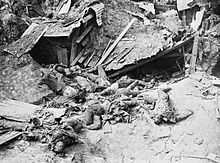
^w German Empire
- In 1934 the official German war history listed 2,037,000[163] military dead. Confirmed dead from all causes 1,936,897 (Army 1,900,876, Navy 34,836, Colonial troops 1,185); wounded 4,215,662; prisoners and missing 974,977 of which an estimated 100,000 were presumed dead.[68]-
- United States War Dept. figures for German casualties are: Total mobilized force 11,000,000; Total casualties 7,142,558 (including Killed and died 1,773,700; wounded 4,216,058; Prisoners and missing 1,152,800)[34]
- The UK War Office listed official German figures from 1921 of 1,808,545 killed and 4,247,143 wounded, exclusive of 14,000 African conscript deaths during the war.[164]
- In 1924 the German government in a reply to a questionnaire from the International Labour Office, an agency of the League of Nations, reported 13,250,000 men mobilized and 2,000,000 dead and missing in World War I.[46]
- The Soviet demographer Boris Urlanis estimated that included in total German military deaths are 1,796,000 killed and died of wounds[104]
- The UK War Office listed official German figures from 1919 of 720 German civilians who were killed by allied air raids [70]
- The figures for civilian deaths due to the Blockade of Germany are disputed. The German Board of Public Health in December 1918 maintained that 763,000[72] German civilians died from malnutrition and disease caused by the blockade up until the end of December 1918.[73][165] A German academic study in 1928 put the death toll at 424,000.[166] A study sponsored by the Carnegie Endowment for International Peace in 1940 estimated the German civilian death toll due to the war at over 600,000. Based on the above-mentioned German study of 1928 they maintained that "A thorough inquiry has led to the conclusion that the number of "civilian" deaths traceable to the war was 424,000, to which number must be added about 200,000 deaths caused by the influenza epidemic" [71]

^x Ottoman Empire:
- Based on his analysis of the non-published individual World War I campaign histories in the Ottoman Archives, Edward J. Erickson estimated Ottoman military casualties in the study Ordered to Die: A History of the Ottoman Army in the First World War. The casualties included, total war dead of 771,844, (243,598 killed in action, 61,487 missing action and 466,759 deaths due to disease). The number of wounded was 763,753 and POWs 145,104[76]
- The Ottoman official casualty statistics published in 1922 were: Total dead 325,000 including (killed in action 50,000, 35,000 died of wounds, 240,000 died of disease). Wounded 400,000. POWs, sick and missing 1,565,000. Total Mobilized 2,850,000 [168]
- United States War Dept. figures for Ottoman casualties are: Total mobilized force 2,850,000; Total casualties 975,000 (including Killed and died 325,000; wounded 400,000; Prisoners and missing 250,000)[34]
- The UK War Office figures for Ottoman casualties were: Total accounted for 725,000 (killed 50,000, died of wounds 35,00, died of disease 400,000, wounded 400,000). Total unaccounted for 1,565,000 (prisoners, deserters, invalides and missing).[169]
- The Soviet demographer Boris Urlanis estimated that included in total Ottoman military deaths are 318,000 killed and died of wounds[104]
- Estimates of Ottoman civilian casualties range from 2,000,000[170] to 2,150,000.[39][171][172] Civilian casualties include the Armenian Genocide. The total number of resulting Armenian deaths is generally held to have been 1.5 million.[77] Other ethnic groups were similarly attacked by the Ottoman Empire during this period, including Assyrians and Greeks, and some scholars consider those events to be part of the same policy of extermination.[173][174][175]
- Turkish spokesmen maintain that reports of Armenian massacres were one sided and distorted work of wartime propaganda [176] The government of Turkey has consistently rejected charges of genocide, arguing that those who died were victims of inter-ethnic fighting, famine, or disease during World War I.
- A Russian journalist in a 2004 handbook of human losses in the 20th century estimated 1,000,000 war related civilian deaths in the Ottoman Empire due to famine and disease.[177]
^y Denmark
- Denmark was neutral in the war. However, Germany at that time included part of Danish Schleswig. Men from this area were conscripted into theGerman forces. Their losses are included with German casualties. Over 700 Danish merchant sailors and fisherman died, mostly due to vessels torpedoed by German submarines.[79]
^j Luxembourg
- Luxembourg remained under German occupation during the war. The government, led by Paul Eyschen, chose to remain neutral. This strategy had the approval of Marie-Adélaïde, Grand Duchess of Luxembourg. Some citizens were conscripted into the German forces. Others escaped to volunteer for the Allies. According to the Mobile Reference travel Guide 3,700 Luxembourg citizens served in the French armed forces, 2,800 gave their lives in the war. They are commemorated at the Gëlle Fra in Luxembourg.[113]
^z Norway
- Norway was neutral in the war but lost ships and merchant sailors in trading through the war zones. In 1924 the Norwegian government in a reply to a questionnaire from the International Labour Office, an agency of the League of Nations, reported 1,180 persons dead and missing in World War I.[46]
^az Sweden
- Sweden was neutral in the war but lost ships and merchant sailors in trading through the war zones. In 1924 the Swedish government in a reply to a questionnaire from the International Labour Office, an agency of the League of Nations, reported 800 persons dead and missing in World War I.[46]
Sources
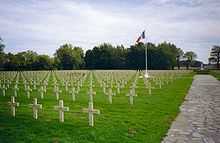
- The Commonwealth War Graves Commission (CWGC) Annual Report 2013–2014 [9] provides current statistics on the military dead for the British Empire. The war dead totals listed in the report are based on the research by the CWGC to identify and commemorate Commonwealth war dead. The statistics tabulated by The Commonwealth War Graves Commission are representative of the number of names commemorated for all servicemen/women of the Armed Forces of the Commonwealth and former UK Dependencies, whose death was attributable to their war service. Some auxiliary and civilian organizations are also accorded war grave status if death occurred under certain specified conditions. For the purposes of CWGC the dates of inclusion for Commonwealth War Dead are 4 August 1914 to 31 August 1921. Total World War I dead were 1,116,371 (UK and former colonies 887,711; Undivided India 73,895; Canada 64,997; Australia 62,123; New Zealand 18,053; South Africa 9,592). The Commonwealth War Graves Commission figures also include the Merchant Navy.
- Statistics of the Military Effort of the British Empire During the Great War 1914–1920, The War Office March 1922.[30] This official report lists Army casualties(including Royal Naval Division) of 908,371 killed in action, died of wounds, died as prisoners of war and were missing in action from 4 August 1914 to 31 December 1920, (British Isles 702,410; India 64,449; Canada 56,639; Australia 59,330; New Zealand 16,711; South Africa 7,121 and Newfoundland 1,204,other colonies 507).[178] Figures of the Royal Navy war dead and missing of 32,287 were listed separately .[179] These figures do not include the Merchant Navy dead of 14,661.[180]
The losses of France, Belgium, Italy, Portugal, Romania, Serbia, Greece, Russia, the USA, Bulgaria, Germany, Austria-Hungary and Turkey were also listed in the UK War Office report.[30] - The official "final and corrected" casualty figures for British Army,including the Territorial Force (not including allied British Empire forces) were issued on 10 March 1921. The losses were for the period 4 August 1914 until 30 September 1919, included 573,507 "killed in action, died from wounds and died of other causes"; 254,176 missing less 154,308 released prisoners; for a net total of 673,375 dead and missing. There were 1,643,469 wounded also listed in the report[137]
- Sources for British Empire casualties are divergent and contradictory. The report of the War Office published in 1922 put the total number of British Empire "soldiers who lost their lives" at 908,371 [181] On a separate schedule the War Office listed the losses of the Royal Navy at 32,237 dead and missing.[182] It is implicit in this presentation that the figures for "soldiers who lost their lives" do not include the Royal Navy. However many published reference works list total British Empire(including the Dominions) losses at 908,371, it is implicit in these presentations that the figures for total losses include the Royal Navy.[183][184][185]
- The War Office report puts the number of "soldiers who lost their lives" from the British Regular Army and Royal Naval Division at 702,410[181] this is not in agreement with the "final and corrected" figures in the 1921 report for the Army published in the General Annual Report of the British Army 1912–1919 which put British Army dead and missing at 673,375;[186] and the official compilation of Army war dead published in 1921 that put total losses at about 673,000.[187] The War Office report did not explain the reason for this discrepancy,however the difference is more than likely due to their inclusion of the Royal Naval Division and deaths outside of combat theaters.[188]
- Casualties and Medical Statistics published in 1931.[189][190] was the final volume of the Official Medical History of the War, gives British Empire, including the Dominions, for Army losses by cause of death. Total war dead in combat theaters from 1914 to 1918 were 876,084, which included 418,361 killed, 167,172 died of wounds, 113,173 died of disease or injury, 161,046 missing and presumed dead and 16,332 prisoner of war deaths. Also listed were 2,004,976 wounded and 6,074,552 sick and injured.[191] Total losses were not broken out for the UK and each Dominion. The figures are for losses in combat theaters only and do not include casualties of forces stationed in the U.K from accidents or disease,casualties of the Royal Naval Division are also not included in these figures; the losses of Gallipoli Campaign are for British forces only since records for Dominion forces since records were incomplete.[94] Figures do not include the Royal Navy.
- Military Casualties-World War-Estimated," Statistics Branch, General Staff, U.S. War Department, 25 February 1924-This report prepared by the U.S. War Department estimated the casualties of the belligerents in the war. The figures from this report are listed in the Encyclopædia Britannica and often cited in historical literature [34]
- Huber, Michel La Population de la France pendant la guerre, Paris 1931.[108] This study published by the Carnegie Endowment for International Peace lists official French government figures for war-related military deaths and missing of France and its colonies.
- Mortara, Giorgo La Salute pubblica in Italia durante e dopo la Guerra, New Haven: Yale University Press 1925.[192] The official government Italian statistics on war dead are listed here. A brief summary of data from this report can be found online.go to Vol 13, No. 15
- The demographer Boris Urlanis an analysis of the military dead for the belligerents in the war including his estimates for the combat related deaths included in total deaths.[193]
- The Belgian government published statistics on their war losses in the Annuaire statistique de la Belgique et du Congo Belge 1915–1919[194]
- Heeres-Sanitätsinspektion im Reichskriegsministeriums, Sanitätsbericht über das deutsche Heer, (Deutsches Feld- und Besatzungsheer), im Weltkriege 1914–1918, Volume 3, Sec. 1, Berlin 1934. The official German Army medical war history listed German losses.
- Grebler, Leo and Winkler, Wilhelm The Cost of the World War to Germany and Austria-Hungary This study published by the Carnegie Endowment for International Peace details the losses of Austria-Hungary and Germany in the war.[195]
- Erickson, Edward J. Ordered to Die: A History of the Ottoman Army in the First World War The authors estimates were made based data from official Ottoman sources.[196]
- Hersch, Liebmann, La mortalité causée par la guerre mondiale, Metron- The International Review of Statistics, 1927, Vol 7. No 1. This study published in an academic journal detailed the demographic impact of the war on France, the UK, Italy, Belgium, Portugal, Serbia, Romania and Greece. The total estimated increase in the number of civilian deaths due to the war was 2,171,000, not including an additional 984,000 Spanish Flu deaths. These losses were due primarily wartime privations.[197]
- Dumas, Samuel (1923). Losses of Life Caused by War published by Oxford University Press- This study detailed the impact of the war on the civilian population. The study estimated excess civilian deaths at: France(264,000 to 284,000), the UK (181,000), Italy(324,000), and Germany(692,000).[198]
- In The International Labour Office, an agency of the League of Nations, published statistics on the military dead and missing for the belligerents in the war.[199]
The source of population data is:
- Haythornthwaite, Philip J., The World War One Source Book Pages 382–383 [200]
See also
- Thankful Villages – villages in England and Wales which lost no men in World War I
- Turkish-Armenian War, Armenian-Azerbaijani War, and Georgian-Armenian War 1918
- World War II casualties
References
- ↑ Matthew White, Source List and Detailed Death Tolls for the Primary Megadeaths of the Twentieth Century
- ↑ Military Casualties-World War-Estimated," Statistics Branch, GS, War Department, 25 February 1924
- ↑ The War Office, Statistics of the Military Effort of the British Empire During the Great War 1914–1920
- ↑ "Military Casualties of World War One". Retrieved 2015-05-02.
- ↑ "World War One Casualty and death tables". Retrieved 2015-05-02.
- ↑ The European Powers in the First World War: An Encyclopedia Spencer C. Tucker Garland Publishing, New York 1999 978-0-8153-3351-7
- ↑ John Ellis, The World War I Databook, Aurum Press, 2001ISBN 1854107666 P.269-70
- ↑ World War I: People, Politics, and Power, published by Britannica Educational Publishing (2010) Page 219
- ↑ 9.0 9.1 9.2 9.3 9.4 9.5 9.6 9.7 9.8 9.9 9.10 9.11 9.12 9.13 Commonwealth War Graves Commission Annual Report 2013-2014, page 48. Figures include identified burials and those commemorated by name on memorials.
- ↑ The War Office, Statistics of the Military Effort of the British Empire During the Great War 1914–1920(however casualties of combat service support personnel from the British Isles were included in the official figures of 1922)
- ↑ "Soldiers died in the great war, 1914–1919,London : Her Majesty's Stationery Office, 1920–1921,80 pts. in 17 v.accessdate=2014-11-21".
- ↑ 12.0 12.1 12.2 12.3 Clodfelter, Michael (2002). Warfare and Armed Conflicts- A Statistical Reference to Casualty and Other Figures, 1500–2000 2nd Ed.. ISBN 978-0-7864-1204-4. Page 479
- ↑ 13.0 13.1 13.2 13.3 13.4 13.5 13.6 13.7 13.8 13.9 13.10 13.11 13.12 13.13 13.14 Ellis, Michael (October 1, 2001). The World War I Databook: The Essential Facts and Figures for all the Combatants. Aurum Press.
- ↑ 14.0 14.1 14.2 14.3 14.4 14.5 14.6 14.7 14.8 14.9 14.10 14.11 14.12 14.13 14.14 14.15 14.16 14.17 14.18 14.19 14.20 14.21 14.22 14.23 14.24 Statistics of the Military Effort of the British Empire During the Great War 1914–1920, The War Office(1922), P.237
- ↑ Statistics Canada Archive
- ↑ 16.0 16.1 Halifax Explosion Remembrance Book
- ↑ Canadian War Museum, The Halifax Explosion
- ↑ 18.0 18.1 Auckland War Memorial Museum
- ↑ 19.0 19.1 Sharpe, Christopher A. "The 'Race of Honour': An Analysis of Enlistments and Casualties in the Armed Forces of Newfoundland: 1914–18," Newfoundland Studies 4.1 (Spring 1988): 27–55.
- ↑ Statistics of the Military Effort of the British Empire During the Great War 1914–1920, The War Office, P.339
- ↑ 21.0 21.1 "Soldiers died in the great war, 1914–1919, Naval and Military Press 1998accessdate=2014-11-21".
- ↑ Statistics of the Military Effort of the British Empire During the Great War 1914–1920, The War Office, P.339
- ↑ Commonwealth War Graves Commission Annual Report 2013-2014, page 48. Figures for the U.K. include 50,000 civilian porters in East Africa and the casualties of overseas labor units serving with the British in Europe and the Mid-East.
- ↑ Statistics of the Military Effort of the British Empire During the Great War 1914–1920, The War Office, P.674–676 (1,260 civilians killed in air and attacks
- ↑ Statistics of the Military Effort of the British Empire During the Great War 1914–1920, The War Office, P.339(14,661 killed in Merchant Navy
- ↑ 26.0 26.1 Gilbert, Martin (1994). Atlas of World War I. Oxford UP. ISBN 978-0-19-521077-4 (908 civilians killed in naval attacks)
- ↑ 27.0 27.1 Hersch, L., La mortalité causée par la guerre mondiale, Metron- The International Review of Statistics, 1927, Vol 7. Pages 47–61
- ↑ Statistics of the Military Effort of the British Empire During the Great War 1914–1920, The War Office, P.339
- ↑ Statistics of the Military Effort of the British Empire During the Great War 1914–1920, The War Office, P.339
- ↑ 30.0 30.1 30.2 30.3 30.4 30.5 30.6 30.7 30.8 30.9 30.10 Statistics of the Military Effort of the British Empire During the Great War 1914–1920, The War Office, P.352
- ↑ 31.0 31.1 31.2 31.3 Annuaire statistique de la Belgique et du Congo Belge 1915–1919. Bruxelles. 1922 p.100
- ↑ Per Annuaire statistique de la Belgique et du Congo Belge 1915–1919 figure of 58,637 includes 2,620 colonial troops and 15,650 porters in Africa
- ↑ 33.0 33.1 33.2 Hersch, L., La mortalité causée par la guerre mondiale, Metron- The International Review of Statistics, 1927, Vol 7.P 59–62
- ↑ 34.0 34.1 34.2 34.3 34.4 34.5 34.6 34.7 34.8 34.9 34.10 34.11 34.12 34.13 34.14 34.15 34.16 34.17 34.18 34.19 34.20 34.21 34.22 34.23 34.24 34.25 34.26 34.27 34.28 34.29 34.30 34.31 34.32 34.33 34.34 34.35 34.36 Military Casualties-World War-Estimated," Statistics Branch, GS, War Department, 25 February 1924; cited in World War I: People, Politics, and Power, published by Britannica Educational Publishing (2010) Page 219
- ↑ Huber, Michel (1931). La Population de la France pendant la guerre. Paris Page 420. The figure includes killed, missing in action and died of wounds excluding died of disease
- ↑ 36.0 36.1 Official History of the Australian Army Medical Services, 1914–1918 Volume III – Special Problems and Services (1st edition, 1943) p. 870
- ↑ Huber, Michel (1931). La Population de la France pendant la guerre. Paris Page 414
- ↑ 38.0 38.1 Ellis, John (1993). World War I–Databook. Aurum Press. ISBN 978-1-85410-766-4, Page 269
- ↑ 39.0 39.1 39.2 Randal Grey. Chronicle of World War I, Vol2 Facts on File 1991 ISBN 0-8160-2139-2 Page 292
- ↑ 40.0 40.1 40.2 40.3 40.4 40.5 Statistics of the Military Effort of the British Empire During the Great War 1914–1920, The War Office, P.353
- ↑ 41.0 41.1 Urlanis, Boris (1971). Wars and Population. Moscow page 209
- ↑ 42.0 42.1 Hersch, L., La mortalité causée par la guerre mondiale, Metron- The International Review of Statistics, 1927, Vol 7.Pages 80–81
- ↑ 43.0 43.1 Mortara, G (1925). La Salute pubblica in Italia durante e dopo la Guerra. New Haven: Yale University Press.P 28–29
- ↑ Mortara, G (1925). La Salute pubblica in Italia durante e dopo la Guerra. New Haven: Yale University Press.P 56–57
- ↑ 45.0 45.1 Hersch, L., La mortalité causée par la guerre mondiale, Metron- The International Review of Statistics, 1927, Vol 7.Pages 52–59
- ↑ 46.0 46.1 46.2 46.3 46.4 46.5 46.6 46.7 46.8 46.9 46.10 46.11 46.12 46.13 46.14 46.15 46.16 46.17 46.18 46.19 46.20 46.21 46.22 46.23 46.24 46.25 International Labour Office,Enquête sur la production. Rapport général. Paris [etc.] Berger-Levrault, 1923–25. Tom 4 p.29
- ↑ 47.0 47.1 Hersch, L., La mortalité causée par la guerre mondiale, Metron- The International Review of Statistics, 1927, Vol 7.Pages 61–64
- ↑ 48.0 48.1 48.2 Erlikman, Vadim (2004). Poteri narodonaseleniia v XX veke : spravochnik. Moscow. Page 51 ISBN 978-5-93165-107-1.
- ↑ 49.0 49.1 49.2 Кривошеев Г.Ф. Россия и СССР в войнах XX века. М., 2001 – Потери русской армии, табл. 52, Krivosheeva, G.F. (2001). Rossiia i SSSR v voinakh XX veka : poteri vooruzhennykh sil : statisticheskoe issledovanie / pod obshchei redaktsiei. Moscow: OLMA-Press See Tables 52 & 56]
- ↑ 50.0 50.1 Erlikman, Vadim (2004). Poteri narodonaseleniia v XX veke : spravochnik. Moscow. Page 18 ISBN 978-5-93165-107-1.
- ↑ 51.0 51.1 51.2 51.3 Hersch, L., La mortalité causée par la guerre mondiale, Metron- The International Review of Statistics, 1927, Vol 7. Pages 65–76
- ↑ 52.0 52.1 Frédéric Le Moal, La Serbie du martyre à la Victoire 1914–1918, 2008, éditions 14–18 (2013) (ISBN 9782916385181), page 231
- ↑ U.S. Department of Veterans Affairs, va.gov
- ↑ 54.0 54.1 54.2 Congressional Research Service, American War and Military Operations Casualties:Lists and Statistics
- ↑ 55.0 55.1 United States Coast Guard Coast Guard History
- ↑ 56.0 56.1 American Merchant Marine at War, www.usmm.org
- ↑ Statistics of the Military Effort of the British Empire During the Great War 1914–1920, The War Office, P.357
- ↑ 58.0 58.1 Österreichischen Bundesministerium für Herrswesen (1938). Österreich-Ungarns letzer Kreig, 1914–1918 Vol. 7. Vienna.VII, Beilage 37
- ↑ John Ellis, The World War I Databook, Aurum Press, 2001 ISBN 1854107666 P.269
- ↑ 60.0 60.1 60.2 Erlikman, Vadim (2004). Poteri narodonaseleniia v XX veke : spravochnik. Moscow. ISBN 978-5-93165-107-1. Page 49
- ↑ 61.0 61.1 Grebler, Leo (1940). The Cost of the World War to Germany and Austria-Hungary. Yale University Press. Page 147
- ↑ Statistics of the Military Effort of the British Empire During the Great War 1914–1920, The War Office, P.357
- ↑ Statistics of the Military Effort of the British Empire During the Great War 1914–1920, The War Office, P.354
- ↑ 64.0 64.1 Urlanis, Boris (1971). Wars and Population. Moscow Page 268
- ↑ Statistics of the Military Effort of the British Empire During the Great War 1914–1920, The War Office, P.354
- ↑ Heeres-Sanitaetsinspektion im Reichskriegsministeriums (1934) (in German). Sanitaetsbericht über das deutsche Heer, (deutsches Feld- und Besatzungsheer), im Weltkriege 1914–1918. Volume 3, Sec 1. Berlin. Pages 12–14 The figure is for total losses from all causes, German official statistics do not break out combat and non-combat losses.
- ↑ Urlanis, Boris (1971). Wars and Population. Moscow page 85, The demographer Boris Urlanis put total German war dead at 2,037,000, he estimated that the figure included 1,796,000 men killed, dead from wounds and gas poisoning.
- ↑ 68.0 68.1 Heeres-Sanitaetsinspektion im Reichskriegsministeriums (1934) (in German). Sanitaetsbericht über das deutsche Heer, (deutsches Feld- und Besatzungsheer), im Weltkriege 1914–1918. Volume 3, Sec 1. Berlin. Pages 12–14
- ↑ John Ellis, The World War I Databook, Aurum Press, 2001 ISBN 1854107666 P.269
- ↑ 70.0 70.1 The War Office (1922). Statistics of the Military Effort of the British Empire During the Great War 1914–1920. Reprinted by Naval & Military Press. p. 678. ISBN 978-1-84734-681-0.
- ↑ 71.0 71.1 Grebler, Leo (1940). The Cost of the World War to Germany and Austria-Hungary. Yale University Press. 1940 Page78
- ↑ 72.0 72.1 Vincent, C. Paul (1985). The Politics of Hunger: The Allied Blockade of Germany, 1915–1919. Athens (Ohio) and London: Ohio University Press.
- ↑ 73.0 73.1 "The National Archives: The Blockade of Germany
- ↑ Statistics of the Military Effort of the British Empire During the Great War 1914–1920, The War Office, P.355
- ↑ Ordered to Die: A History of the Ottoman Army in the First World War By Huseyin (FRW) Kivrikoglu, Edward J. Erickson Page 211.
- ↑ 76.0 76.1 76.2 Erickson, Edward J., Ordered to Die: A History of the Ottoman Army in the First World War, Greenwood 2001. ISBN 978-0-313-31516-9 Page 211
- ↑ 77.0 77.1 Totten, Samuel, Paul Robert Bartrop, Steven L. Jacobs (eds.) Dictionary of Genocide. Greenwood Publishing Group, 2008, p. 19. ISBN 978-0-313-34642-2.
- ↑ Poteri narodonaseleniia v XX veke : spravochnik. Moscow. ISBN 978-5-93165-107-1. Pages 61,65,73,77 and 78
- ↑ 79.0 79.1 Byarkivet i Horsens
- ↑ Erlikman, Vadim (2004). Poteri narodonaseleniia v XX veke : spravochnik. Moscow. ISBN 978-5-93165-107-1.
- ↑ Erlikman, Vadim (2004). Poteri narodonaseleniia v XX veke : spravochnik. Moscow. Page 36 ISBN 978-5-93165-107-1.
- ↑ 82.0 82.1 82.2 82.3 Erlikman, Vadim (2004). Poteri narodonaseleniia v XX veke : spravochnik. Moscow. Page 88 ISBN 978-5-93165-107-1.
- ↑ Erlikman, Vadim (2004). Poteri narodonaseleniia v XX veke : spravochnik. Moscow. Page 54 ISBN 978-5-93165-107-1.
- ↑ Estonian War Museum – General Laidoner Museum
- ↑ Erlikman, Vadim (2004). Poteri narodonaseleniia v XX veke : spravochnik. Moscow. Pages 83–99 ISBN 978-5-93165-107-1.
- ↑ Erlikman, Vadim (2004). Poteri narodonaseleniia v XX veke : spravochnik. Moscow. Pages 41 ISBN 978-5-93165-107-1
- ↑ Fergus Campbell, Land and Revolution, Nationalist Politics in the West of Ireland 1891–1921, p196
- ↑ 88.0 88.1 David Fitzpatrick, Militarism in Ireland, 1900–1922, in Tom Bartlet, Keith Jeffreys ed's, p392
- ↑ Dúchas The Heritage Service, Visitors Guide to the Gardens
- ↑ http://www.irishtimes.com/culture/heritage/irish-soldiers-in-the-first-world-war-who-where-and-how-many-1.1884022
- ↑ Andrzej Gawryszewski (2005). Ludnosc Polski w XX wieku. Warsaw. Pages 411–412
- ↑ Erlikman, Vadim (2004). Poteri narodonaseleniia v XX veke : spravochnik. Moscow. Pages 49 ISBN 978-5-93165-107-1.
- ↑ Chris Baker www.1914–1918.net The Labour Corps of 1917–1918
- ↑ 94.0 94.1 Mitchell, T.J. (1931). Casualties and Medical Statistics of the Great War. London: Reprinted by Battery Press (1997).Page 12 ISBN 978-0-89839-263-0
- ↑ Commonwealth War Graves Commission, THE CHINESE LABOUR CORPS AT THE WESTERN FRONT
- ↑ Erlikman, Vadim (2004). Poteri narodonaseleniia v XX veke : spravochnik. Moscow. Pages and 83–99 ISBN 978-5-93165-107-1.
- ↑ McLaughlin, Peter (1980). Ragtime Soldiers: the Rhodesian Experience in the First World War. Bulawayo: Books of Zimbabwe. p. 140. ISBN 0-86920-232-4.
- ↑ Vladimir Dedijer, History of Yugoslavia McGraw-Hill Inc.,US, 1975 ISBN 0-07-016235-2 Page 501
- ↑ Erlikman, Vadim (2004). Poteri narodonaseleniia v XX veke : spravochnik. Moscow. Page 55 ISBN 978-5-93165-107-1.
- ↑ US Library of Congress A Country Study: Nepal
- ↑ Strachan, Hew (1999). World War I: A History. Oxford University Press. ISBN 978-0-19-820614-9 Page 100
- ↑ Deaths as a result of service with Australian units
- ↑ Roll of Honour
- ↑ 104.0 104.1 104.2 104.3 104.4 104.5 104.6 104.7 104.8 104.9 104.10 104.11 104.12 104.13 Urlanis, Boris (1971). Wars and Population. Moscow Page 85
- ↑ Horne, John and Kramer, Alan, German Atrocities, 1914 ISBN 978-0-300-08975-2
- ↑ Canadian War Museum ,The Cost of Canada's War
- ↑ Canadian Virtual War Memorial
- ↑ 108.0 108.1 Huber, Michel (1931). La Population de la France pendant la guerre. Paris.
- ↑ Huber, Michel (1931). La Population de la France pendant la guerre. Paris. Page 414
- ↑ Huber, Michel (1931). La Population de la France pendant la guerre. Paris. Page 420
- ↑ Mémoire des Hommes
- ↑ Quid 2007 Robert Laffont, 2006 ISBN 2221106776 p. 1083
- ↑ 113.0 113.1 Travel Luxembourg (Grand Duchy of Luxembourg)
- ↑ Porch, Douglas (1991). The French Foreign Legion: A Complete History of the Legendary Fighting Force.Publisher and page to be added.
- ↑ Hersch, L., La mortalité causée par la guerre mondiale, Metron- The International Review of Statistics, 1927, Vol 7. Pages 30–47
- ↑ Dumas, Samuel (1923). Losses of Life Caused by War. Oxford. Page 157
- ↑ Huber, Michel (1931). La Population de la France pendant la guerre. Paris Pages 312–313
- ↑ Urlanis, Boris (1971). Wars and Population. Moscow page 160
- ↑ 119.0 119.1 Urlanis, Boris (1971). Wars and Population. Moscow page 85
- ↑ Bujac, Jean, Les campagnes de l'armèe Hellènique, 1918–1922, Paris, 1930 p.339
- ↑ Demographic Research Vol 13, No. 15
- ↑ Dumas, Samuel (1923). Losses of Life Caused by War. Oxford. Page 165
- ↑ Mortara, G (1925). La Salute pubblica in Italia durante e dopo la Guerra. New Haven: Yale University Press Pages 57–66
- ↑ Yasakuni Shrine
- ↑ Auckland War Memorial Museum Cenotaph Database
- ↑ Hersch, L., La mortalité causée par la guerre mondiale, Metron- The International Review of Statistics, 1927, Vol 7.Pages 76–80
- ↑ Erlikman, Vadim (2004). Poteri narodonaseleniia v XX veke : spravochnik. Moscow. ISBN 978-5-93165-107-1. Page 51
- ↑ Россия в мировой войне 1914—1918 гг. (в цифрах)., 1925, Russia and the World War 1914–1918 (in figures)
- ↑ Россия в мировой войне 1914—1918 гг. (в цифрах)., 1925, Russia and the World War 1914–1918 (in figures) pp.20,30 and 31
- ↑ Головин Н.Н. «Военные усилия России в мировой войне» в 2-х томах. Париж, 1939
- ↑ Urlanis, Boris (1971). Wars and Population. Moscow Pages 266–268
- ↑ Erlikman, Vadim (2004). Poteri narodonaseleniia v XX veke : spravochnik. Moscow. ISBN 978-5-93165-107-1. Page 18
- ↑ 133.0 133.1 Frédéric Le Moal, La Serbie du martyre à la Victoire 1914–1918, 2008, éditions 14–18 (2013) (ISBN 9782916385181), page 231.
- ↑ "Kusturica reveals monument to Gavrilo Princip". Retrieved 2014-07-31.
- ↑ Serbian Ministry of Defense website
- ↑ Urlanis, Boris (1971). Wars and Population. Moscow Pages 66,79,83, 85,160,171 and 268.
- ↑ 137.0 137.1 137.2 137.3 137.4 137.5 137.6 137.7 137.8 137.9 137.10 137.11 137.12 The Army Council. General Annual Report of the British Army 1912–1919. Parliamentary Paper 1921, XX, Cmd.1193.,PartIV p. 62–72
- ↑ Douglas Jerrold, Royal Naval Division (1923) P.338 The figures for the Royal Naval Division were 7,547 killed and 2,584 died of wounds
- ↑ Dumas, Samuel (1923). Losses of Life Caused by War. Oxford. p. 139 "From Dr. T.H.C. Stevenson of the General Register Office, London, I received privately the following figures. There were also about 19,000 deaths among troops not connected with any of the expeditionary forces"
- ↑ "Tower Hill Memorial". Retrieved 2014-10-19.
- ↑ War Graves Commission, Find War Dead accessdate=2014-11-24
- ↑ 142.0 142.1 The Long, Long Trail is a personal website written by Chris Baker (2015-04-26). "The Labour Corps of 1917-1918". Retrieved 2015-04-26.
- ↑ Statistics of the Military Effort of the British Empire During the Great War 1914–1920, The War Office, P.237
- ↑ Statistics of the Military Effort of the British Empire During the Great War 1914–1920, The War Office, P.339
- ↑ Statistics of the Military Effort of the British Empire During the Great War 1914–1920, The War Office, P.339
- ↑ H.A. Jones, War In The Air. (Appendices). Being The Story Of The Part Played In The Great War By The Royal Air Force p.160(this is the official history of the RFC and the RAF from 1914-1918
- ↑ History of the RAF, Bowyer, 1977 (Hamlyn)
- ↑ Douglas Jerrold, Royal Naval Division (1923) P.338
- ↑ "Soldiers died in the great war, 1914–1919,London : Her Majesty's Stationery Office, 1920–1921,80 pts. in 17 v.accessdate=2014-11-21".
- ↑ Dumas, Samuel (1923). Losses of Life Caused by War. Oxford. Page 151
- ↑ Statistics of the Military Effort of the British Empire During the Great War 1914–1920, The War Office, P.674-676
- ↑ The Economist (2010-04-26). "The Economist: "Strange meeting", 26 April 2010". Economist.com. Retrieved 2015-04-26.
- ↑ WW1 Photos Centenary Website: 2014-2018 By Paul Reed (2010-04-26). "Chinese Labour Corps 1919". Paul Reed. Retrieved 2015-04-26.
- ↑ "THE CHINESE LABOUR CORPS AT THE WESTERN FRONT" (PDF). Retrieved 2015-04-26.
- ↑ Voice of America (VOA) (2010-04-26). "chinas-world-war-one-effort-draws-new-attention". (VOA). Retrieved 2015-04-26.
- ↑ "MOMBASA AFRICAN MEMORIAL". Retrieved 2015-04-26.
- ↑ Warfare and Armed Conflicts – A Statistical Reference to Casualty and Other Figures, 1500–2000 2nd Ed. Clodfelter, Michael 2002 ISBN 978-0-7864-1204-4 pages 384–85
- ↑ Warfare and Armed Conflicts – A Statistical Reference to Casualty and Other Figures, 1500–2000 2nd Ed. Clodfelter, Michael 2002 ISBN 978-0-7864-1204-4 page 481
- ↑ Casualties-World War-Estimated," Statistics Branch, GS, War Department, 25 February 1924
- ↑ John Ellis, The World War I Databook, Aurum Press, 2001 ISBN 1854107666 P. 269
- ↑ Statistics of the Military Effort of the British Empire During the Great War 1914–1920, The War Office, P.357
- ↑ Statistics of the Military Effort of the British Empire During the Great War 1914–1920, The War Office, P.354
- ↑ John Ellis, The World War I Databook, Aurum Press, 2001 ISBN 1854107666 P.269
- ↑ Statistics of the Military Effort of the British Empire During the Great War 1914–1920, The War Office, P.355
- ↑ Germany. Gesundheits-Amt. Schaedigung der deutschen Volkskraft durch die feindliche Blockade. Denkschrift des Reichsgesundheitsamtes, Dezember 1918. (Parallel English translation) Injuries inflicted to the German national strength through the enemy blockade. Memorial of the German Board of Public Health, 27 December 1918 [Berlin, Reichsdruckerei,]The report notes on page 17 that the figures for the second half of 1918 were estimated based on the first half of 1918.
- ↑ Bumm, Franz, ed., Deutschlands Gesundheitsverhältnisse unter dem Einfluss des Weltkrieges, Stuttgart, Berlin [etc.] Deutsche Verlags-Anstalt; New Haven, Yale University Press, 1928 Pages 22 to 61
- ↑ "Twenty-Seven", Ambassador Morgenthau's Story, BYU, 1918.
- ↑ Mehmet Beşikçi Ottoman mobilization of manpower in the First World War : Leiden ; Boston : Brill, 2012. ISBN 900422520X pp. 113–114
- ↑ Statistics of the Military Effort of the British Empire During the Great War 1914–1920, The War Office, P.355
- ↑ Ellis, John (1993). World War I–Databook. Aurum Press. ISBN 978-1-85410-766-4. Page 270
- ↑ Warfare and Armed Conflicts- A Statistical Reference to Casualty and Other Figures, 1500–2000 2nd Ed Clodfelter, Michael 2002 ISBN 978-0-7864-1204-4 page483
- ↑ Tucker, Spencer C (1999). The European Powers in the First World War: An Encyclopedia. New York: Garland Publishing. ISBN 978-0-8153-3351-7.
- ↑ International Association of Genocide Scholars Resolution_on_genocides_committed_by_the_Ottoman_Empire
- ↑ Gaunt, David. Massacres, Resistance, Protectors: Muslim-Christian Relations in Eastern Anatolia during World War I. Piscataway, New Jersey: Gorgias Press, 2006.
- ↑ Schaller, Dominik J; Zimmerer, Jürgen (2008). "Late Ottoman genocides: the dissolution of the Ottoman Empire and Young Turkish population and extermination policies – introduction". Journal of Genocide Research 10 (1): 7–14. doi:10.1080/14623520801950820.
- ↑ David Fromkin , A Peace to End All Peace, Avon, 1990 ISBN 0-380-71300-4 Page 213
- ↑ Poteri narodonaseleniia v XX veke : spravochnik. Moscow. ISBN 978-5-93165-107-1. Pages 61,65,73,77 and 78
- ↑ Statistics of the Military Effort of the British Empire During the Great War 1914–1920, The War Office p. 237
- ↑ Statistics of the Military Effort of the British Empire During the Great War 1914–1920, The War Office, P.339
- ↑ Statistics of the Military Effort of the British Empire During the Great War 1914–1920, The War Office, P.352
- ↑ 181.0 181.1 The War Office (1922). Statistics of the Military Effort of the British Empire During the Great War 1914–1920. Reprinted by Naval & Military Press. p.239 ISBN 978-1-84734-681-0.
- ↑ The War Office (1922). Statistics of the Military Effort of the British Empire During the Great War 1914–1920. Reprinted by Naval & Military Press. p.339 ISBN 978-1-84734-681-0.
- ↑ The European Powers in the First World War: An Encyclopedia Spencer C. Tucker Garland Publishing, New York 1999 978-0-8153-3351-7
- ↑ John Ellis, The World War I Databook, Aurum Press, 2001 ISBN 1854107666 P.269-70
- ↑ World War I: People, Politics, and Power, published by Britannica Educational Publishing (2010) Page 219
- ↑ The Army Council. General Annual Report of the British Army 1912–1919. Parliamentary Paper 1921, XX, Cmd.1193.,PartIV p. 62–72
- ↑ Soldiers died in the great war, 1914–1919, Her Majesty's Stationery Office, 1920–1921
- ↑ Dumas, Samuel (1923). Losses of Life Caused by War. Oxford. p. 139 "From Dr. T.H.C. Stevenson of the General Register Office, London, I received privately the following figures. There were also about 19,000 deaths among troops not connected with any of the expeditionary forces"
- ↑ "Medical services; casualties and medical statistics of the great war, by Major T. J. Mitchell and Miss G. M. Smith p.12". Retrieved 2014-11-20.
- ↑ Mitchell, T.J. (1931). Casualties and Medical Statistics of the Great War. London: Reprinted by Battery Press (1997) ISBN 978-0-89839-263-0 p.12
- ↑ Casualties and Medical Statistics of the Great War p. 12 lists a total of 352,458 missing and prisoners of war,included in this total were 191,412 prisoners of whom 16,332 died in captivity.
- ↑ Mortara, G (1925). La Salute pubblica in Italia durante e dopo la Guerra. New Haven: Yale University Press.
- ↑ Urlanis, Boris (1971). Wars and Population. Moscow Page 85
- ↑ Annuaire statistique de la Belgique et du Congo Belge 1915–1919. Bruxelles. 1922 p.100
- ↑ Grebler, Leo (1940). The Cost of the World War to Germany and Austria-Hungary. Yale University Press.
- ↑ Erickson, Edward J., Ordered to Die: A History of the Ottoman Army in the First World War, Greenwood 2001. ISBN 978-0-313-31516-9
- ↑ The article is available from Metron, the publisher
- ↑ Dumas, Samuel (1923). Losses of Life Caused by War. Oxford.
- ↑ International Labour Office,Enquête sur la production. Rapport général. Paris [etc.] Berger-Levrault, 1923–25. Tom 4 p.29
- ↑ Haythornthwaite, Philip J., The World War One Source Book Arms and Armour, 1993, ISBN 978-1-85409-102-4.
Further reading
- Urlanis, Boris (1971). Wars and Population. Moscow.
- Heeres-Sanitaetsinspektion im Reichskriegsministeriums (1934). Sanitaetsbericht über das deutsche Heer, (deutsches Feld- und Besatzungsheer), im Weltkriege 1914–1918 (in German). Volume 3, Sec 1. Berlin.
- Dumas, Samuel (1923). Losses of Life Caused by War. Oxford.
- Clodfelter, Michael (2002). Warfare and Armed Conflicts- A Statistical Reference to Casualty and Other Figures, 1500–2000 2nd Ed. ISBN 978-0-7864-1204-4.
- The War Office (1922). Statistics of the Military Effort of the British Empire During the Great War 1914–1920. Reprinted by Naval & Military Press. ISBN 978-1-84734-681-0.
- Huber, Michel (1931). La Population de la France pendant la guerre. Paris.
- Bujac, Jean, Les campagnes de l'armèe Hellènique, 1918–1922, Paris, 1930
- Erickson, Edward J., Ordered to Die: A History of the Ottoman Army in the First World War, Greenwood 2001. ISBN 978-0-313-31516-9
- The Commonwealth War Graves Commission Debt of Honour Register
- Grey, Randal (1991). Chronicle of the First World War, Vol II: 1917–1921. Facts On File. ISBN 978-0-8160-2595-4.
- Grebler, Leo (1940). The Cost of the World War to Germany and Austria-Hungary. Yale University Press.
- Gilbert, Martin (1994). Atlas of World War I. Oxford UP. ISBN 978-0-19-521077-4.
- Harries, Merion (1991). Soldiers of the Sun-The Rise and Fall of the Imperial Japanese Army. Random House. ISBN 978-0-679-75303-2.
- Mortara, G (1925). La Salute pubblica in Italia durante e dopo la Guerra. New Haven: Yale University Press.
- Mitchell, T.J. (1931). Casualties and Medical Statistics of the Great War. London: Reprinted by Battery Press (1997). ISBN 978-0-89839-263-0.
- Gelvin, James L. The Israel-Palestine Conflict: One Hundred Years of War. Cambridge University Press. ISBN 978-0-521-85289-0.
- Hersch, L., La mortalité causée par la guerre mondiale, Metron- The International Review of Statistics, 1927, Vol 7.
- Ellis, John (1993). World War I–Databook. Aurum Press. ISBN 978-1-85410-766-4.
- US War Dept 1924 data listed in the Encyclopædia Britannica
- Österreichischen Bundesministerium für Herrswesen (1938). Österreich-Ungarns letzer Kreig, 1914–1918 Vol. 7. Vienna.
- The Army Council. General Annual Report of the British Army 1912–1919. Parliamentary Paper 1921, XX, Cmd.1193.
- l'Annuaire statistique de la Belgique et du Congo Belge 1915–1919. Bruxelles. 1922.
- Horne, John and Kramer, Alan, German Atrocities, 1914 ISBN 978-0-300-08975-2
- Haythornthwaite, Philip J. (1992). The World War One Sourcebook. Arms and Armour. ISBN 978-1-85409-102-4.
- Strachan, Hew (1999). World War I: A History. Oxford University Press. ISBN 978-0-19-820614-9.
- Krivosheev, G.F. (2001). Rossiia i SSSR v voinakh XX veka : poteri vooruzhennykh sil : statisticheskoe issledovanie / pod obshchei redaktsiei. Moscow: OLMA-Press.
- Erlikman, Vadim (2004). Poteri narodonaseleniia v XX veke : spravochnik. Moscow. ISBN 978-5-93165-107-1.
- Tucker, Spencer C. (1999). The European Powers in the First World War: An Encyclopedia. New York: Garland Publishing. ISBN 978-0-8153-3351-7.
- Yalman, Ahmed Emin (1930). Turkey in the World War. Economic and social history of the World War., Turkish series. New Haven: Yale University Press. OCLC 397515.
- Bane, S. L.; Lutz R. H., (1942). The Blockade of Germany after the Armistice 1918–1919. Stanford CN: Stanford Iniv. Press. OCLC 876320449.
- Gawryszewski, Andrzej (2005). Ludnosc Polski w XX wieku. Monografie / Instytut Geografii i Przestrzennego Zagospodarowania im. Stanisława Leszczyckiego PAN 5. Warsaw: Warszawa: Instytut Geografii. ISBN 8-38795-466-7.
External links
| Wikimedia Commons has media related to Casualties of World War I. |
- World War I casualties from Historical Atlas of the Twentieth Century
- Long way to Tipperary- an Irish story of the great war